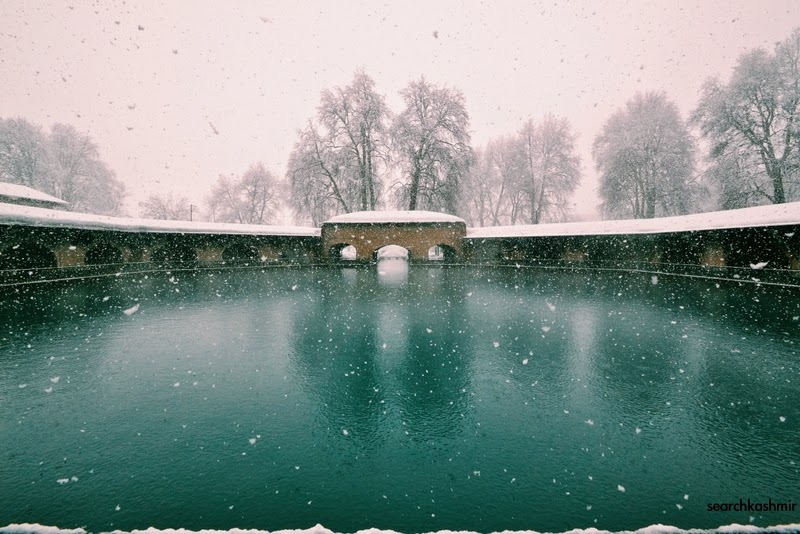“Satich Kahvit (Kashmiri) is a play (1929) by Nandlal Kaul [Nana] (1870-1940). It marks the beginning of the modern age of the history of Kashmiri drama. We are told some plays were written in Kashmiri prior to Satich kahvit and Zaina vilas (The play of Zaina) is often quoted as an instance. This was written when Zainaul Abidin (1420-1470) ruled Kashmir, but the original manuscript of the play has not been located so far. This means that Satich kahvit revived the tradition of drama in Kashmiri after a lapse of almost six hundred years.
The play is based on the famous story of Harishchandra and Taramati. Harishchandra was the 28th king of the Solar line and the son of the famous king Trishanku. The story of Harishchandra is included in Aitrya Brahmana, Mahabharata, Markandeya purana.
This drama, though based on an old story, enjoyed great popularity and was staged again and again at Rughnath temple (Srinagar) and at Sheetalnath (Srinagar). The play was seen through the press in 1935 after it had been staged at various places between 1929 and 1932.
As far as the technique of the play is concerned, the author has to a large extent followed the tradition of both Sanskrit drama and Hindustani drama of the twenties of this century. At certain places the play comes very close to the Parsi theatre. Besides the sutradhara, we find the character of vidushaka in the play. The language is a mixture of Sanskrit and Kashmiri, and for this reason perhaps its appeal is restrictive. Besides the theme, its diction is nowhere close to the present day Kashmiri. However, the author has made good use of mythology and Hindu tradition and has delineated well the characters of Harishchandra, Taramati, Rohit and Vishvamitra. The story of Harishchandra was made the basis of yet another drama, Satich vath (Path of truth) written by Tarachand Bismil in 1936 and published in 1939.
Satich kahvit represents the third phase of prose writing in Kashmiri. Its dialogues are in rhythmic prose, but its influence was short-lived as it attracted the attention of only a few writers, and came to an end with Tarachand Bismil (1948).
The author has to his credit three other plays, entitled Ramun raj (The period of Rama’s reign), Paz pativrata (A fathful wife) and Dayilol (Devotion of God).”
~ Encyclopaedia of Indian Literature: sasay to zorgot By Mohan Lal. Based on works of: B.B. Kachru, Kashmiri Literature (Wiesbaden, 1981); J.L. Kaul, Studies in Kashmiri (Srinagar, 1968); S.K. Raina, Kashmiri bhasha aur sahitya ka itihas (Delhi, 1968)
Recently, I had an interesting discussion with a culture vulture writer friend from down south Bangalore. In the second hand-book market of Bangalore he had picked an old book by J.L. Kaul (front page missing, most probably ‘Studies in Kashmiri’) and was now researching for a paper on drama history between 1900 – 1950. He wanted to know what was the story in Kashmir. He wanted to know about the pre-IPTA days of Kashmiri Drama and if women were involved with it and if yes, who were they. I told him about a couple of books, sent some links, told him about Bhands, Bacchhas, Hafeezas, told him I don’t think any women were involved in any of this. I wasn’t much help but managed to learn about things like: Krod Thirath Sabha Dramatic club in Baramula that staged a play in 1938 called grisy sund gari (‘A Peasant’s House’) by Mohi-ud-Din Hajani (1917-93) (also published in Pratap magazine that year).
I wondered what it must have been like to be in audience of one of these plays. Then a couple of days ago, I came across this passage by one Edmund Russell (a follower of Madame Blavatsky) in ‘Everybody’s Magazine, v.8, 1903, Jan-Jun:
“Connected with the temple the Maharajah keeps a company of players, as has been the custom of his ancestors. In that weird courtyard, by the light of torches, a Sanskrit drama was given for me. The performance was preceded by a procession of priests bearing flowers and gifts. My choice was the heart-rendering “Harischandra,” and given with the simplest surroundings, it was played with an intensity and spirit we could not excel. The audience itself was a thing of wonder as I, the only European present, looked on those upturned, tear-swept faces lit by the torches’ glare. A sea of emotion swept of all conventionality. It told what the old-world spectacles must have been.”
This was in around 1903, a couple of decades before what is believed to be the antiquity of Nandlal Kaul’s play on Harishchandra and beginning of modern play in Kashmir.
-0-





























 ~ Abdul Ahad Azad (1903-1948)
~ Abdul Ahad Azad (1903-1948)








